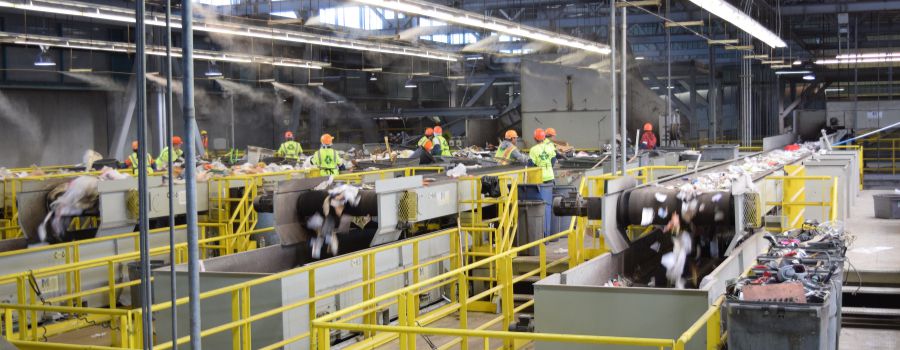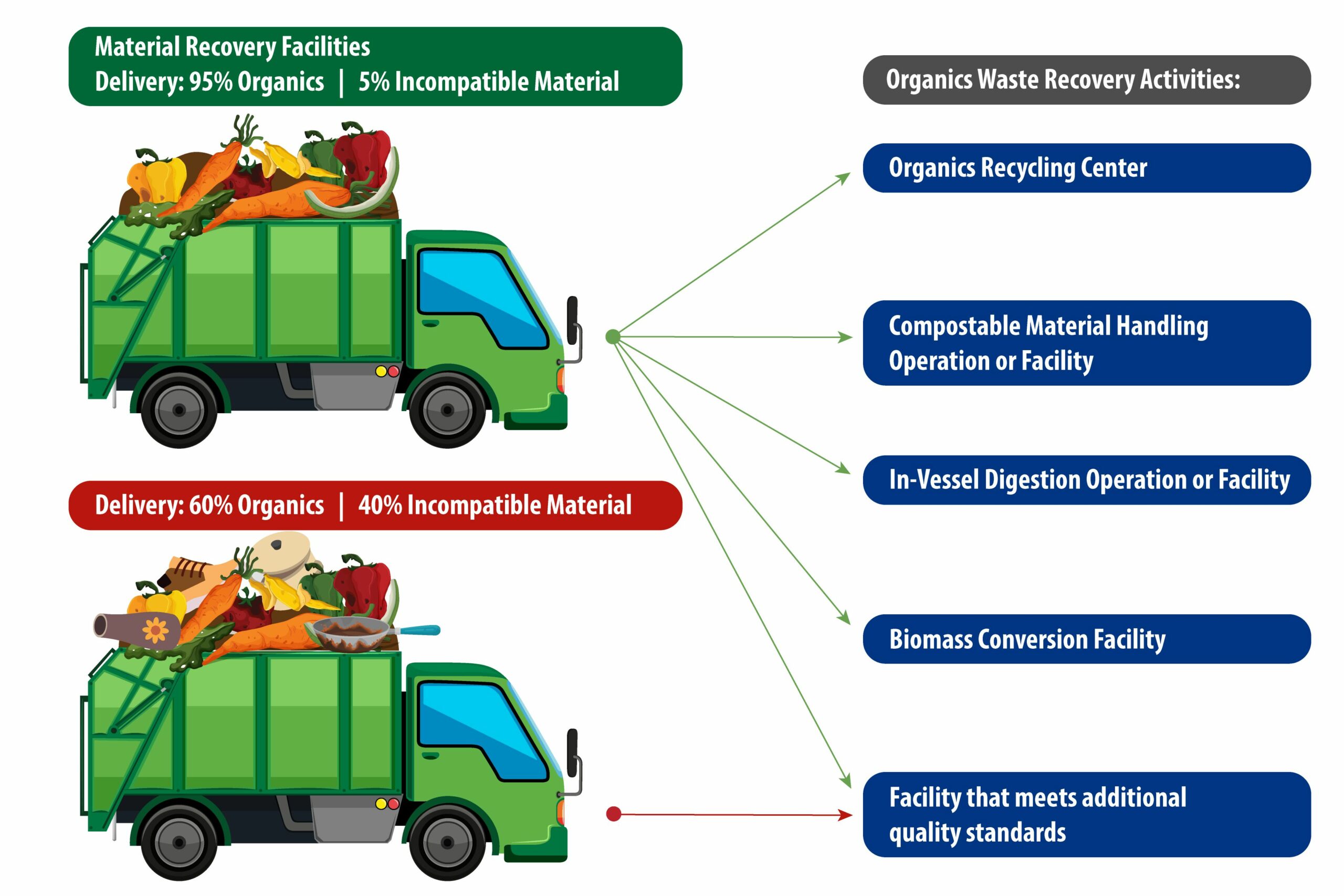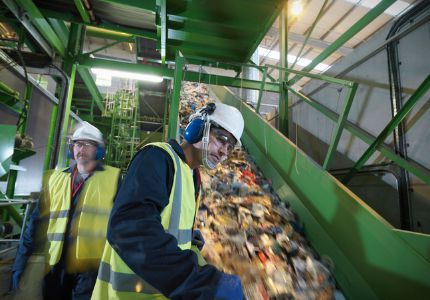
Transfer/Processing Facility and Operation Requirements
The passage of SB 1383 resulted in changes to Title 14 CCR, Chapter 3, Article 6. The following is a brief summary of these changes. For a comprehensive list of all guidance documents see the LEA Regulation Implementation Guidance page.
Depending on the type of collection service, haulers may deliver mixed organics (MO) or source-separated organics (SSO) to transfer/processing facilities or operations. At the facility, these two streams of material must be processed separately, as they each have different handling requirements.
The operator must conduct sampling of the waste streams to determine how much organic material is recovered and how much is disposed to calculate the recovery percentage.
Optional Sampling Log Template for Transfer/Processors
SB 1383 Measurement Demonstration Videos
The quality of the final recovered organics depend upon the quality of the feedstock material:
- All material that a transfer/processing facility or operation sends to a recovery activity (like composting or anaerobic digestion) should be 80 percent “clean” or less than 20 percent of incompatible material by 2022 and 90 percent clean or less 10 percent of incompatible material by 2024.
- A transfer/processing facility or operation that does not meet the cleanliness standard can only send organics to a facility or operation that can meet the cleanliness standard or the acceptable levels of organic waste sent to disposal.
Transfer/processing operators are also required to maintain records and report to CalRecycle sampling results and daily outgoing weights of organic material sent for recovery and disposal.
Incompatible Material Limits
Processing facilities that can meet the standard of 80 percent “clean” or less than 20 percent incompatible material by 2022 and 90 percent “clean” or less than 10 incompatible material by 2024 can send the material to any type of recovery activity. Facilities that cannot meet the cleanliness standard must send organic material to a facility that can meet the cleanliness standard or the acceptable levels of organic waste sent to disposal. These cleanliness standards ensure that organics recovery and recycling facilities have clean streams of feedstock to produce high-quality products.
Gray Container Waste Stream
Transfer/processing operators are required to perform quarterly evaluations of gray container collection stream to determine the amount of organics collected in that waste stream.
Gray Container Waste Evaluations Guidance
Comparison Guide: Gray Container and Mixed Waste Organic Streams Classification

Overview of the changes to Title 27 CCR, Division 2, Chapter 3, Landfill Requirements
The passage of SB 1383 resulted in changes to Title 27 CCR, Division 2, Chapter 3. A summary of changes to the landfill requirements include:
- New or expanding landfills must implement an organic waste recovery activity.
- No later than January 1, 2023, the operator must submit to CalRecycle an Organic Disposal Reduction Status Impact Report that analyzes the potential impacts to the landfill’s design and operation that may result from a reduction in the amount of organic waste disposed at the landfill.
Changes to Solid Waste Facility Permit Requirements
The passage of SB 1383 resulted in changes to Title 27 CCR, Division 2, Chapter 4, including changes to the filing and processing requirements for a solid waste facilities permit (SWFP) application:
- For new or expanding solid waste landfills, the solid waste facilities permit applicant shall hold a public meeting with any affected disadvantaged communities within 180 days of submittal of the permit application package.
- For new and revised SWFP applications, the enforcement agency (EA) shall conduct an informational meeting that is located as close to the facility and affected disadvantaged communities as reasonably practical, if no suitable location exists within one mile of the facility. Informational meetings should be held on a day and time that the EA determines will enable attendance by residents, especially those of affected disadvantage communities, living in the vicinity of the subject facility.
For more information contact: Short-Lived Climate Pollutants (SLCP), Organic Waste Methane Emissions Reductions, SLCP.organics@calrecycle.ca.gov

